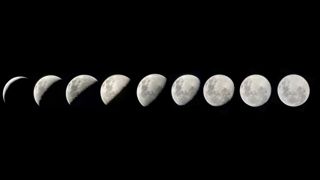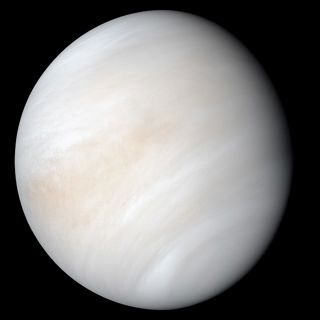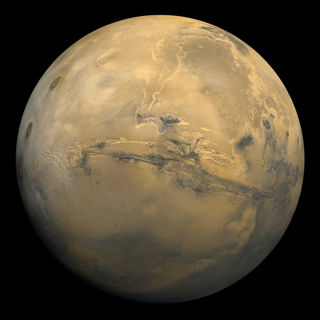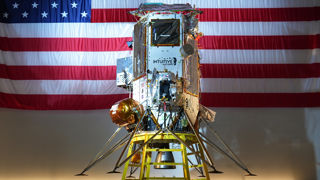
What's Happening in Space: February 2025
- 1st Feb 2025
- Author: Dhara Patel
A summary of space events through the month
It's a shorter month but that doesn't mean a lack of interesting goings-on up in space! Here is Dhara Patel (our resident Space Expert) sharing her round-up of some notable space and science events coming up in the weeks ahead...
Throughout February – spot the International Space Station
There may be sightings throughout February to spot the International Space Station moving across the sky – use NASA’s Spot the Station to find out when and where to spot the largest artificial satellite overhead. You may be able to spot the station shortly after sunset on 1st February (it’ll pass below Venus, the Moon and Saturn in the southwest), or possibly during the latter half of the month.
1st-9th February – National Astronomy Week
National Astronomy Week 2025 falls during the first week of February and the theme is ‘Chasing the Moon’. Watch the Moon as it traverses across the sky over the week, passing numerous planets and bright stars. Some of the close encounters are noted below, but check out our 5 stargazing challenges – National Astronomy Week blog to find out more.

1st February – Moon, Venus and Saturn close in the sky
Look for the Moon sitting between Venus and Saturn during the early evening of 1st February in the south-western sky. Venus will appear brighter and sit above the Moon with Saturn being fainter positioned below. The waxing crescent moon will be in conjunction (sharing the same right ascension – coordinate) with Venus a little later that evening and will have been in conjunction with Saturn earlier in the day. They should be visible as the sky begins to darken, up until around 20:00 when they’ll set below the horizon. They’ll be visible to the naked eye but clear views without tall buildings and trees will help you spot them more easily especially when they’re lower on the horizon. Find out more about close approaches and conjunctions in our astronomical phenomena blog written by David Southworth in our Education Team.
4th February – New Shepard | NS-29 launch
Unlike previous missions, Blue Origin’s New Shephard rocket is scheduled to launch with technological payloads rather than crew on its 29th mission. NS-29 is due to take off from the company’s spaceport - Launch Site One in West Texas at 15:30 on 4th February. In this suborbital flight, the capsule’s Reaction Control System will be used to spin the craft up to approximately 11 revolutions per minute thereby simulating one-sixth of the gravity on Earth. In this simulated lunar gravity, 29 of the 30 payloads will be able to test their lunar related technologies. Blue Origin hopes that this sort of flight will provide customers including NASA with the ability to ready technologies for the Moon at a much lower cost.
6th February – Moon and Jupiter close in the sky
Look for Jupiter close to the Moon during the evening of 6th February in the southern sky. The waxing gibbous moon will be in conjunction (sharing the same right ascension – coordinate) with Jupiter in the early hours of the following morning. The pair should be visible from sunset as the sky begins to darken, up until the early hours of the following morning when they set below the horizon, but are best viewed around 18:00 when they’ll be high in the sky. Check out the astronomical phenomena blog linked above to find out more about close approaches and conjunctions.

9th February – Moon and Mars close in the sky
Look for Mars positioned incredibly close to the Moon during the early evening of 9th February in the eastern sky. The waxing gibbous moon will be in conjunction (sharing the same right ascension – coordinate) with Mars around the same time. They should be visible from sunset as the sky begins to darken, up until dawn the following morning. They’ll be visible to the naked eye, and through a pair of binoculars / telescope at close approach. Clear views without tall buildings and trees will help you spot them more easily especially when they’re closer to the horizon. Check out the astronomical phenomena blog linked above to find out more about close approaches and conjunctions.
12th February – full moon (13:53)
Known as the Snow moon (according to the old Farmers’ Almanac), this full moon is named due to the cold and snowy Februarys experienced in North America. Check out the Full Moon: Full Facts blog written by Mike Darch in our Education team to find out more.
16th February – Venus at greatest brightness
Because the inner planets pass close to the Sun making them difficult to see, an apparition is a period of time when they are visible from Earth. On 16th February Venus will be at its greatest observable brightness (also known as its greatest brilliancy) during this apparition. Look to the west from around sunset to spot the brightest object in the night sky – coming only second to the Moon. It will set by 21:00 so make sure you have clear views without tall buildings and trees to help you spot it more easily.

27th February – IM-2 (PRIME-1) launch
Currently scheduled for launch just after midnight on 27th February, the private American company Intuitive Machines is set to launch their IM-2 PRIME-1 mission to the Moon on a SpaceX Falcon 9 rocket from Kennedy Space Center, Florida, USA. It’s part of NASA’s CLPS (Commercial Lunar Payload Services) program in which the agency funds private robotic missions to the Moon to help prepare for NASA for returned human spaceflight to our lunar neighbour with the Artemis Program. Around a year to date, Intuitive Machines became the first private company to successfully land on the Moon with the Odysseus lander on the IM-1 mission. This second mission is designed to look for prospects of water ice and other volatiles on the Moon's south pole and will carry three NASA payloads including the PRIME-1 drill and two NASA-funded technology demonstrations.
27th February – SPHEREx & PUNCH launch
NASA’s SPHEREx (Spectro-Photometer for the History of the Universe, Epoch of Reionization and Ices Explorer) mission is a new telescope with a target launch date f no earlier than 27th February from Vandenberg Space Force Base, California, USA on a Falcon 9 rocket. It will help improve our understanding of the structure of the universe and how galaxies form and evolve, as well as the origins and abundance of water as a key ingredient for life in our galaxy. From a sun-synchronous polar orbit (meaning it will pass over the same location on Earth at the same time each day), the telescope will survey the sky in optical as well as near-infrared light over its two-year planned mission.
Ridesharing on the launch is NASA’s PUNCH (Polarimeter to Unify the Corona and Heliosphere) mission – from low Earth orbit, this constellation of four small satellites will make global, 3D observations of the Sun's outermost layer called the corona, to help us understand how the mass and energy there become solar wind.

28th February new moon (00:44)
The new moon will occur in the constellation of Aquarius. The lack of moonlight interference provides a great time to try and view deep sky objects (especially with the aid of binoculars and telescopes). We have a blog on Moon phases written by Mike Darch in our Education team.
Please note: As this summary is created at the end of the month before, dates (especially launch dates) can often change or be updated, so this content may become outdated - we always recommend checking on the relevant organisation's pages.
